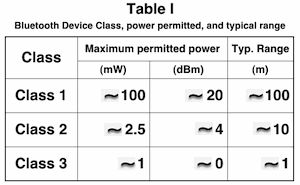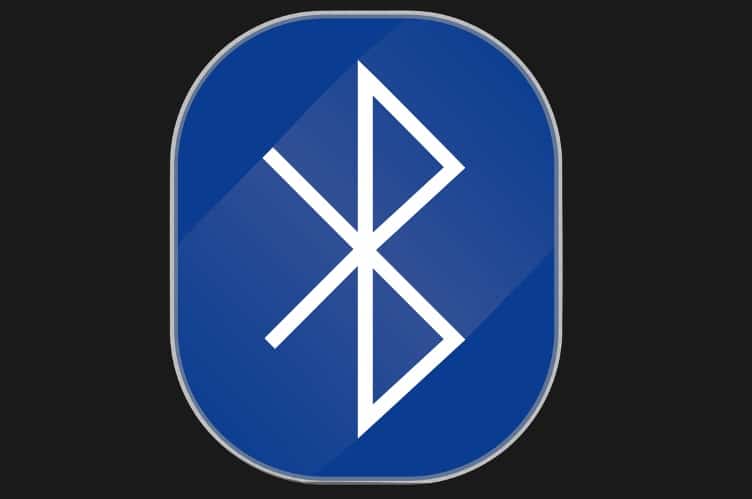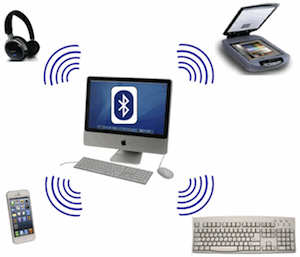Bluetooth Technology Is Used With Hearing Aids. Do You Understand It?
 Hearing aids today employ Bluetooth technology to turn hearing aids into wireless headsets so that those with hearing loss can talk on cell phones with ease and without annoying acoustic feedback.
Hearing aids today employ Bluetooth technology to turn hearing aids into wireless headsets so that those with hearing loss can talk on cell phones with ease and without annoying acoustic feedback.
Bluetooth-enabled devices, such as MP3 players, PCs, radios, televisions, and landline telephones can connect wirelessly to the hearing aid using radio frequency and a gateway device as a method and alternative to wireless electro-magnetic induction, FM, or infrared communication.
But, what is Bluetooth?
This series is intended to present basic and general information to understanding Bluetooth technology and its uses. Serious students of Bluetooth technology are expected to look elsewhere for guidance.
Bluetooth: What is it?
Bluetooth is a unique wireless technology intended to realize three objectives:
- Eliminate the connection of wires associated with most consumer and computer equipment, and to do this without any direct action from the user
- Allow multiple devices to be connected at the same time, and to function as an intelligent whole (to “talk” to each other)
- Make a location centric connectivity seamless (devices automatically find each other and discover what they can do for each other)
Bluetooth is a chip that can be plugged into computers, digital cameras, mobile phones, etc. to allow the above objectives to occur.
More specifically, Bluetooth is a dynamic open Standard for exchanging data wirelessly over short distances from fixed and mobile devices to create personal area networks (PANs) with high levels of security (Figure 1). It allows connectivity utilizing RF (radio frequency) technology in the unlicensed ultra high frequency 2.4 GHz (2400-2483.5 MHz, including guard bands) ISM band reserved internationally for industrial, scientific, and medical (ISM) purposes other than telecommunications.
Bluetooth was originally intended to replace the cable(s) connecting portable and/or fixed electronic devices. Unlike infrared, which uses a beam of light to transmit data and is found in many remote controls, wireless keyboards, etc., Bluetooth uses radio frequency to communicate.
A key difference from other wireless technologies is that Bluetooth allows combined use of functions provided by different devices.
In operation, Bluetooth devices automatically find each other, establish connections within themselves, and discover what they can do for each other.
Bluetooth SIG (Special Interest Group)
Bluetooth technology was created by the telecom vender Ericsson as a replacement for RS232 cable connections in 1994, and in February 1998, the Bluetooth SIG (Special Interest Group) was founded by a small core of major companies: IBM, Intel, Nokia, Toshiba, and Ericsson. These companies agreed to work together to develop a wireless technology that allows any sort of electronic equipment to make their own connections, and “talk” to each other by exchanging voice and data over short distances.
The Bluetooth SIG is now a trade association comprised of telecommunication, computing, consumer electronics, and network industry companies whose purpose is to drive the development of a low-cost, short-range wireless specification for connection of mobile products that can be initiated by user interaction. Microsoft, Lucent, Motorola, and 3M joined the SIG in December 1999.
To date, more than 19,000 companies worldwide are members of the Bluetooth SIG, and the number continues to grow. The first version of Bluetooth was released in 1999. The SIG also manages the qualification program and protects the trademarks. For a device to be marketed as a Bluetooth device, it must be qualified to standards defined by the SIG, and a network of patents is required to implement the technology, licensed only for the qualifying device.
Bluetooth Uses and Applications
Bluetooth technology can be applied to many low-power consumption activities that allow Bluetooth connectivity, including, but not limited to:
- E-mail/Internet access. Portable computers receiving e-mail messages can receive an alert on a mobile phone. Incoming e-mail messages can be browsed, selected, and read in the mobile phone’s display.
- Synchronization of devices. Desktop computers, portable PCs, notebooks, and mobile phones can be automatically synchronized. For instance, as soon as an office is entered, the person’s address list and calendar in their notebook will automatically be updated to agree with the one on the desktop, or vice versa.
- Voice and data communication. Bluetooth is capable of handling both voice and data at the same time. Cordless headsets can be connected to a portable PC, and then use the portable PC as a speaker phone, regardless of whether in a car or at home. Or, Bluetooth can be used to transfer files, contact details, calendar appointments, business cards, applications, and reminders between devices with OBEX (OBject EXchange – a communications protocol that facilitates the exchange of binary objects between devices), such as PDAs.
- Wireless control of and communication between mobile phones and a hands-free headset. This was one of the earliest popular applications.
- Connection to a LAN (local area network). Cordless connections can be made from a desktop or laptop computer to printers, scanners, and to the LAN. Freedom in everyday work can be made by cordless connection of a mouse and keyboard to a PC. This is especially good in a confined space, and where little bandwidth is required.
- Remote control of home appliances. The development of home appliance remote access systems allows remote control of home security alarms, doors, windows, refrigerators, washing machines, dryers, steam cookers, etc. These are remotely activated by mobile telephones.
- In automobile systems using a mobile phone to control stereos and GPS.
- Other consumer-used connectivity to Bluetooth includes web cams, airport ticket counters, etc.
- Replacement of previous wired RS-232, USB, WAP communications in medical equipment, bar code scanners, test equipment, etc.
- In the area of hearing, Bluetooth technology allows connecting smart phones and other personal devices to hearing aids.
Bluetooth Protocols
Bluetooth replaces wired device connections, and is designed primarily for low power consumption, and for short-range transmission (although effective ranges vary in practice, based on the transceiver microchip in each device. A transceiver is a device that comprises both a transmitter and receiver sharing common circuitry or a single housing).
 Communication range is power-class-dependent (Table I). An advantage is that communicating devices do not have to be in visual line of sight of each other, but still a quasi-optical wireless path must be viable. As such, the effective range can vary due to propagation conditions, attenuation, room acoustics, variations in the production product, antenna configurations, and battery conditions. Most Bluetooth applications are Class 2, battery-powered devices. As such, it makes little difference in the communication range whether the device connected to the other end is a Class I or Class II device, because the lower-powered device tends to set the limit on the range (there are exceptions).
Communication range is power-class-dependent (Table I). An advantage is that communicating devices do not have to be in visual line of sight of each other, but still a quasi-optical wireless path must be viable. As such, the effective range can vary due to propagation conditions, attenuation, room acoustics, variations in the production product, antenna configurations, and battery conditions. Most Bluetooth applications are Class 2, battery-powered devices. As such, it makes little difference in the communication range whether the device connected to the other end is a Class I or Class II device, because the lower-powered device tends to set the limit on the range (there are exceptions).
Bluetooth Technology – Part II will appear next week on this blog.
Wayne Staab, PhD, is an internationally recognized authority in hearing aids. As President of Dr. Wayne J. Staab and Associates, he is engaged in consulting, research, development, manufacturing, education, and marketing projects related to hearing. His professional career has included University teaching, hearing clinic work, hearing aid company management and sales, and extensive work with engineering in developing and bringing new technology and products to the discipline of hearing. This varied background allows him to couple manufacturing and business with the science of acoustics to bring innovative developments and insights to our discipline. Dr. Staab has authored numerous books, chapters, and articles related to hearing aids and their fitting, and is an internationally-requested presenter. He is a past President and past Executive Director of the American Auditory Society and a retired Fellow of the International Collegium of Rehabilitative Audiology.








Great article, Wayne – very informative and a very thorough perspective on the history of BT technology. Looking forward to the next post.
Thanks. Helpful article. Because I am RE-entering the business world with a new career and experienced during this past year hearing loss I will be purchasing hearing aids with Bluetooth technology. Price ranges are dramatic. Which makes me wonder? Could be anywhere from $ 1500 to over $5,000. Any advice in selecting a reputable manufacturer would be appreciated as cost is an issue.